“Would you like to go to a funeral, m’am?”
Not exactly the question you’d expect when stepping out of a long distance bus… And yet, what this man was proposing, is quite normal in Tana Toraja. In fact, funerals are the “main attraction” in the region. Visitors mostly come to learn about the Torajan culture in which death happens to play a central role. The Torajans are known for their elaborate traditional funeral rites. Tana Toraja, which means land of the Toraja people, is located in South Sulawesi, Indonesia.
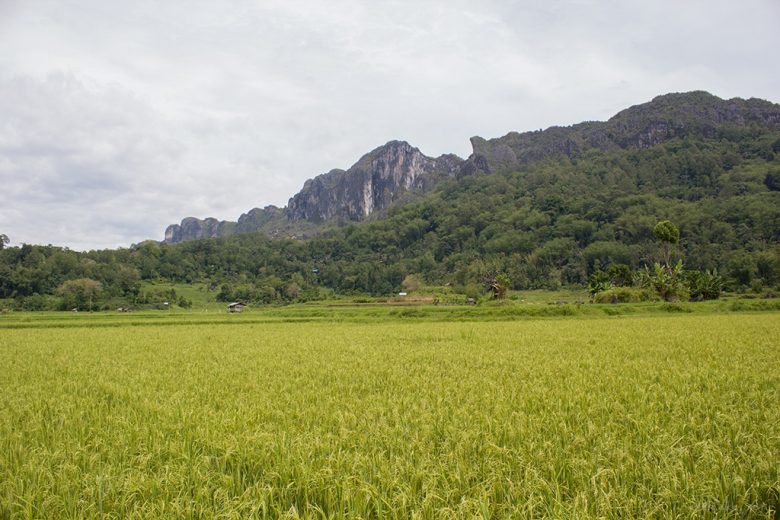
Intrigued by this culture, we agreed to the invitation and headed to the funeral only minutes after dropping our bags at the hotel. Luther, our guide, advised us to gift a few packs of cigarettes to the mourning family. “Cigarettes”? How ironic. He also told us we were very lucky; we were going to the funeral of a very rich lady who had long been chief of village…
“Lucky”? What a confusing use of words…
The deceased lady’s family welcomed us warmly and insisted we’d sit with them. We were offered tea and biscuits while encouraged to chat about our countries. This was all very awkward. The taboo around death in Western cultures was clearly nowhere to be found around here.
The Torajans seemed very “relaxed” about it all. That might have something to do with the fact that when people pass, they are not buried straight away. Their families continue to work in order to gather all necessary funds to finance the funeral. It may take months or years before the burying rituals begin, depending on the family’s cash flow.
Meanwhile, the bodies are embalmed, wrapped in cloth and kept in their traditional houses or ‘tongkonan’, under the same roof with their kin. Their spirits then dwell around the village until the burial. The dead aren’t considered dead, but merely ‘incurably ill’ until the funeral is complete. They are treated as though they were still alive. Family members take turns in sitting with the body, brining it food, water and cigarettes on a daily basis. Not doing so would lead the deceased to think they aren’t cared about and he/she would bring bad luck to the village.
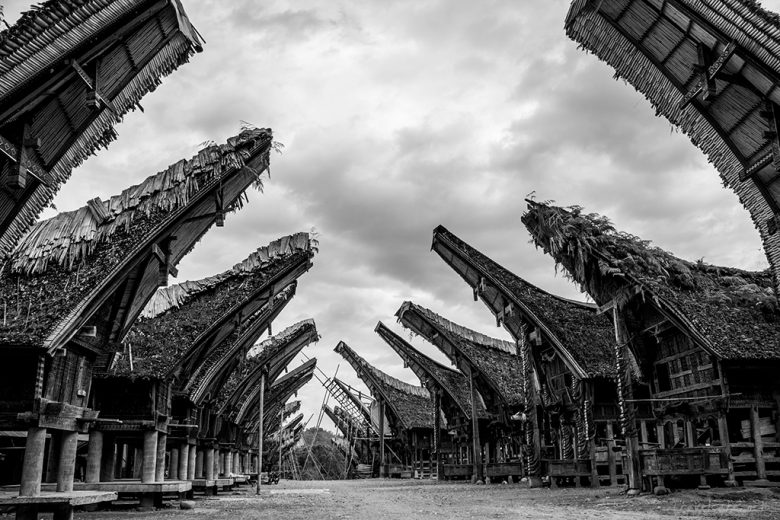
In Torajan culture, the funeral is the most important ceremony in life. One leads his life in order to have the biggest, most elaborate funeral possible. The 100 or more guests always bring a gift: cigarettes, rice, a pig or a buffalo according to their financial ability. The funeral lasts 11 days and consists of serval rites.
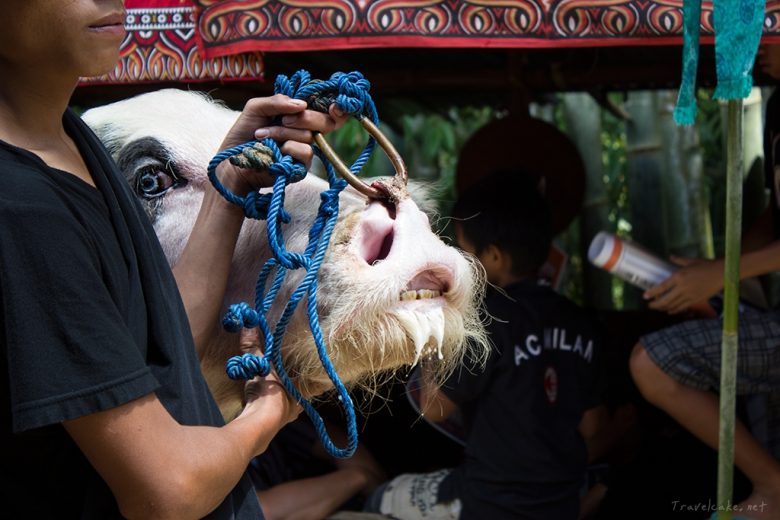
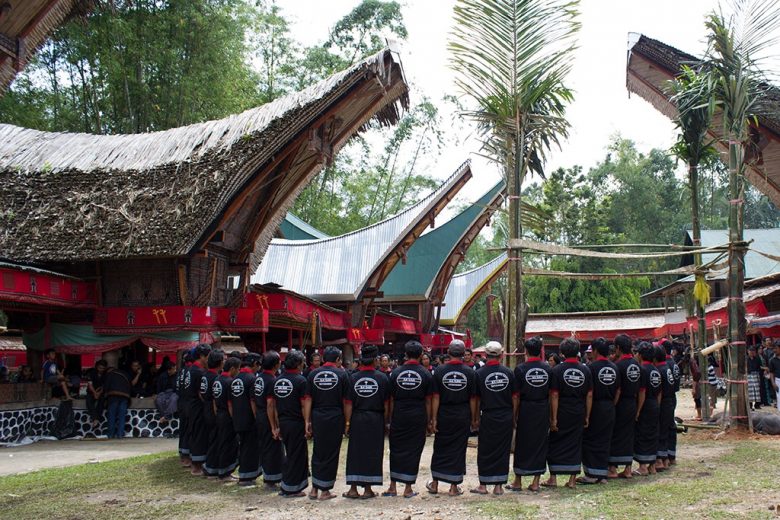
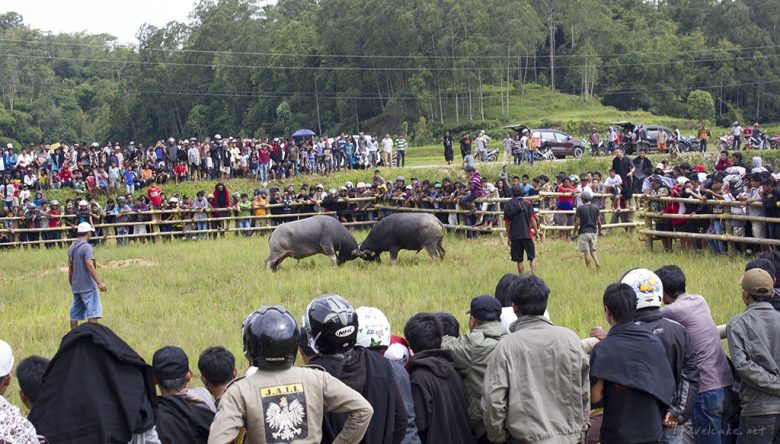
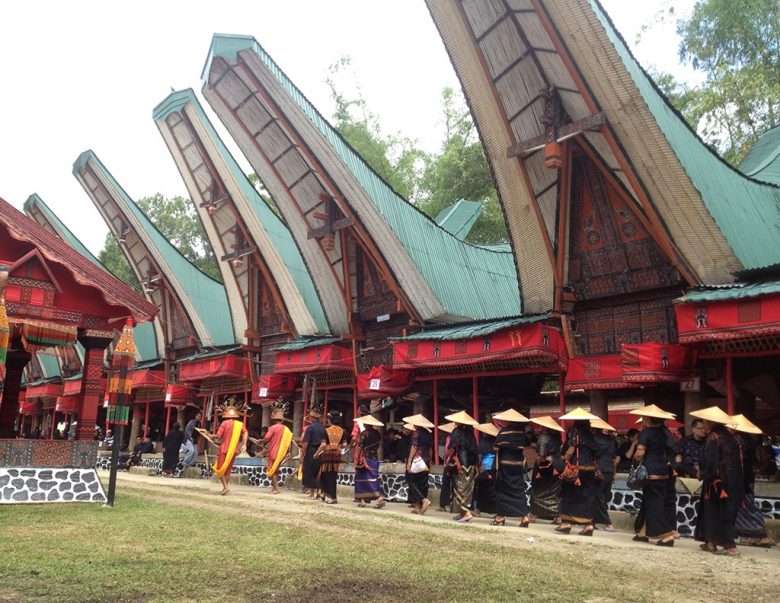
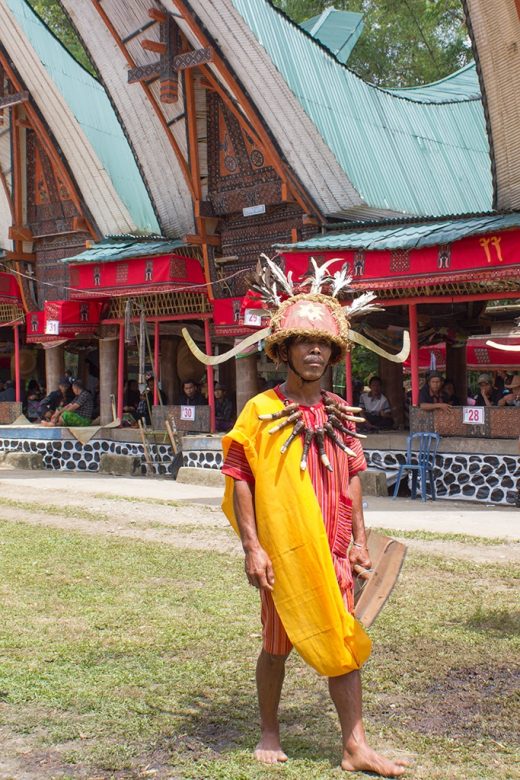
Torajan funerals are a bloody affair. The deceased’s soul is believed to travel to the afterlife on a buffalo or horse. How do you bring livestock to your afterlife? By sacrificing it, of course. Therefore, the more buffalo offered, the more reassured the family will be that their loved ones will reach his or her final destination safely. Apart from buffaloes, the dead will also need to bring along their most valuable possessions, including the rest of their livestock. This is one of the most important funeral rites: pigs and buffaloes are slaughtered by the dozens. Their souls join their owners while their flesh is distributed with the living family and guests. How’s that for a party favour, a big bag of meat…
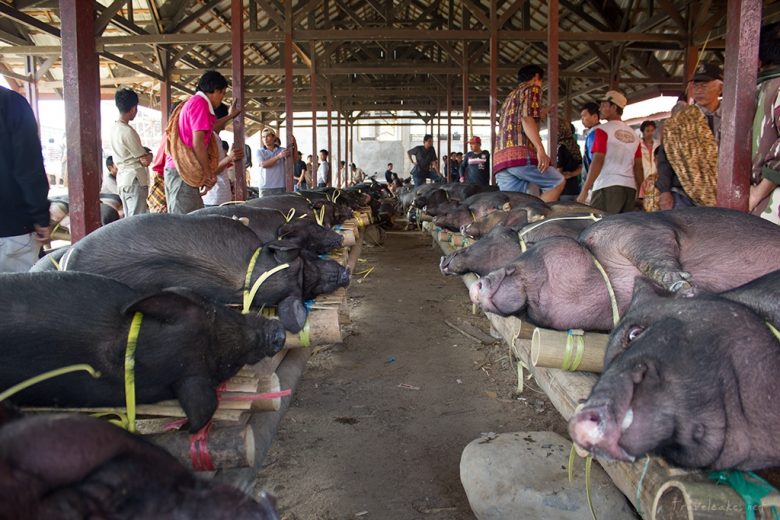
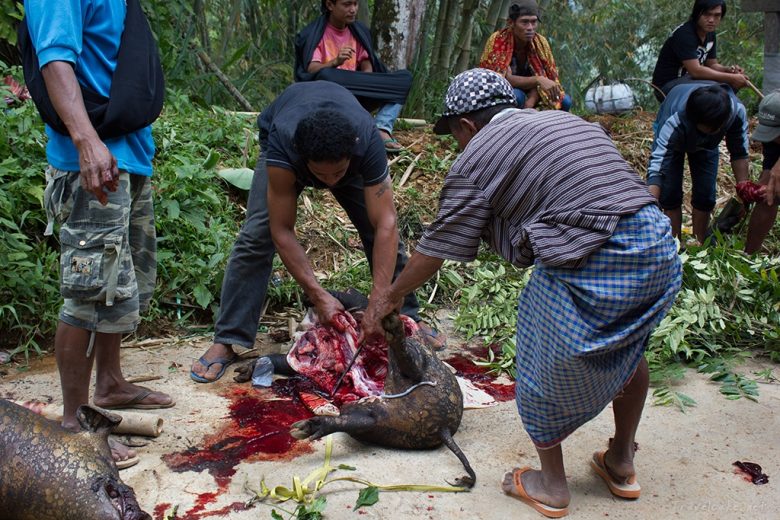
Because buffaloes come with a high price tag, their horns are cut off and kept as a “trophy”. They are hung up on the deceased tongkonan and represent the family’s wealth. The more horns on your house, the wealthier your family.
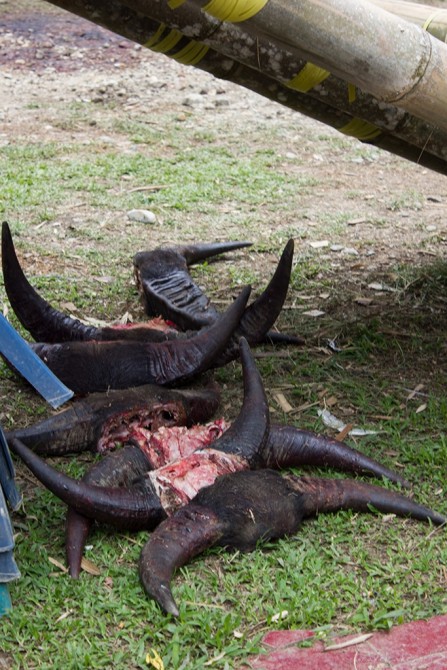
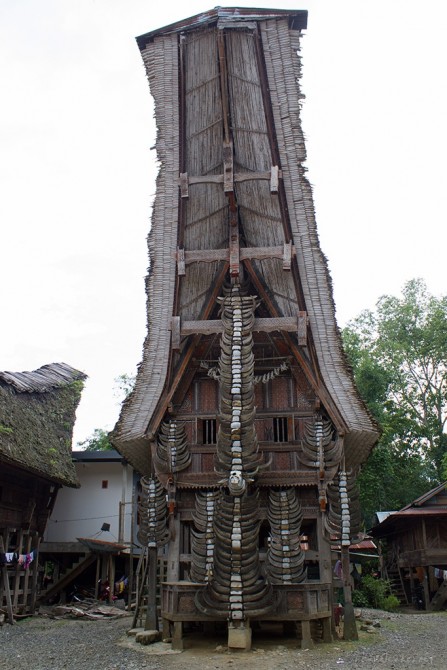
When the funeral is completed the bodies are buried. Not under the ground, but in a cave or in a hole carved in a cliff. Family members craft a “tau-tau”; what could be compared to an avatar, representing the deceased. His/her spirit is believed to inhabit the tau-tau. They are placed on a balcony in front of the graves. Several times a year, after the rice harvest, family members ask their ancestors, inhabiting the tau-tau, for well being, good crops and healthy children.
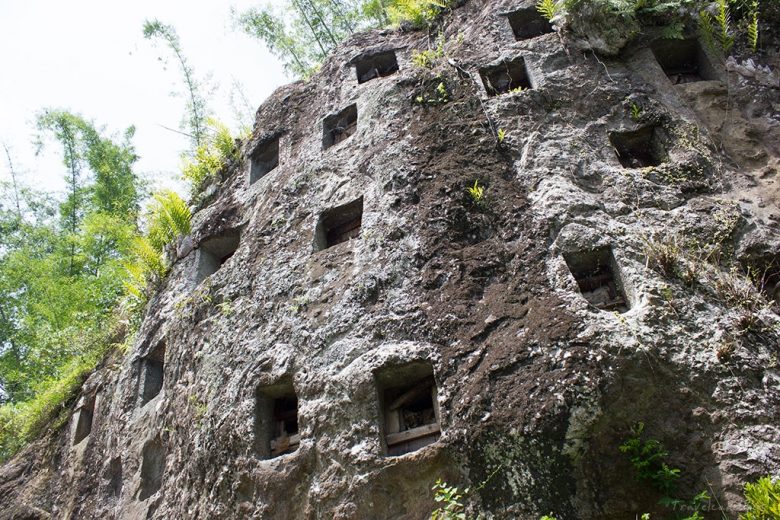
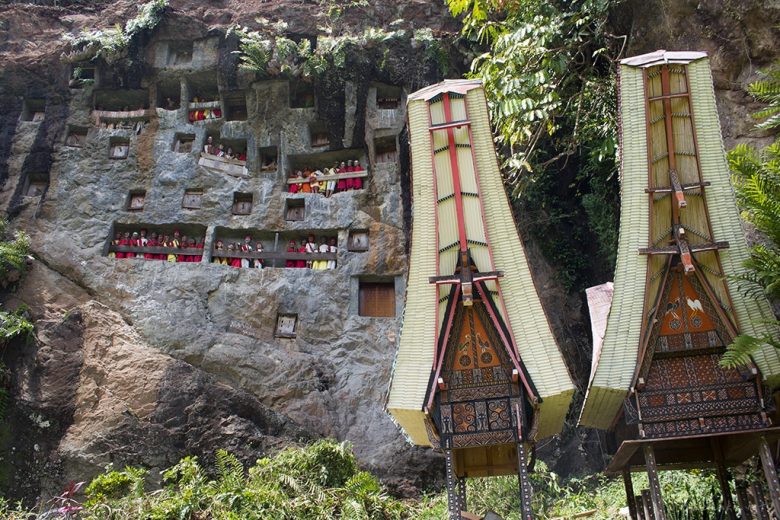
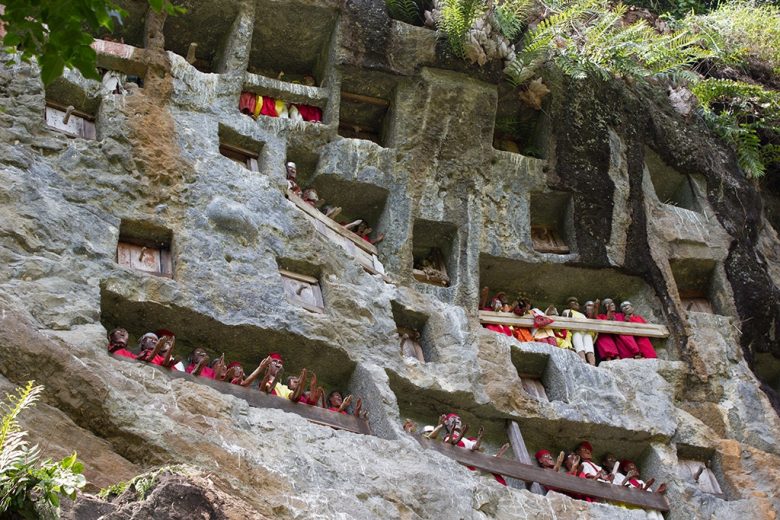
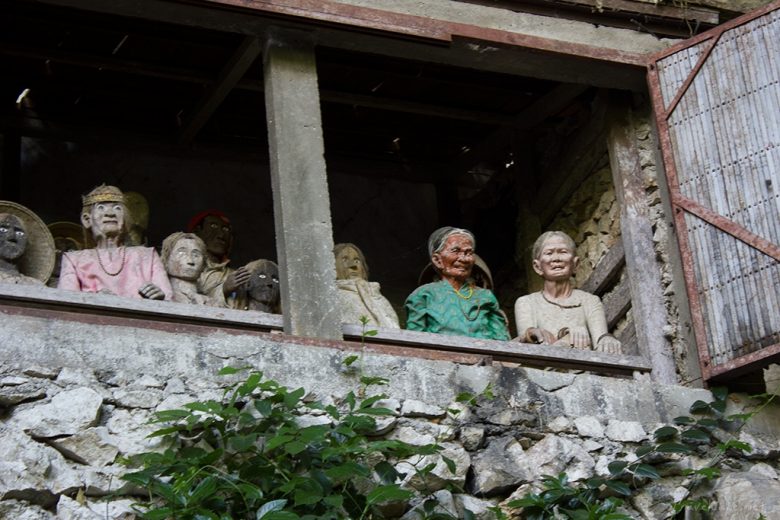
The burying ritual for babies is less complex. The lifeless babies are embalmed and placed in a sitting position in a carved hole of a large tree. The type of tree used a for the burying is a specific one; a thick white fluid oozes from its bark when cut. The fluid symbolises the milk the tree will feed the young child with. It embraces the babies by growing around them and closing the hole. It becomes their mother. These trees are considered sacred and may not be approached by outsiders but we were allowed to visit an old tree which is no longer in use.
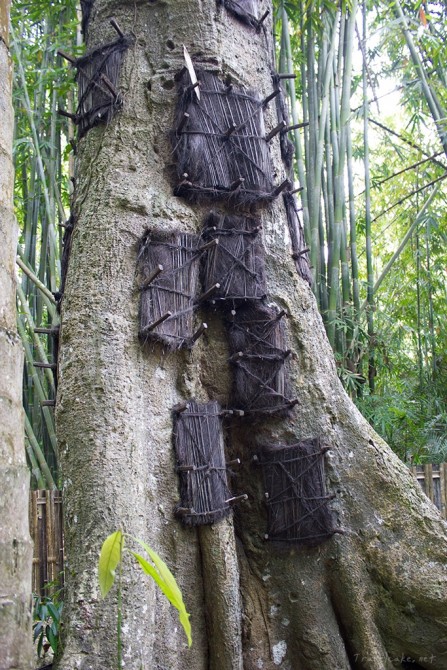
Attending a funeral is weirdly enough, a top attraction in Tana Toraja. I found it such an incredible enrichment to experience how this culture deals with death and what place it has in their communities. Watching the slaughtering was bit harsh, however that’s easily put into perspective since it’s so authentic. This is not some show put on for tourists, this is Torajan reality. People are so friendly and open, I quickly felt at ease.
‘Funeral season’ is in July and August, but there are funerals throughout the year. Tourists are welcome to attend them and are treated as honoured guests. Make sure you bring a gift to the family! There isn’t really a dress code, but obviously you should dress modestly and respectfully. If you have a black t-shirt, wear it; you’ll fit right in. The city of Rantepao is a good base to explore Tana Toraja.
Would animal sacrificing stop you from attending a local ritual?
The post ‘Torajan death rituals‘ first appeared on Travel Cake.
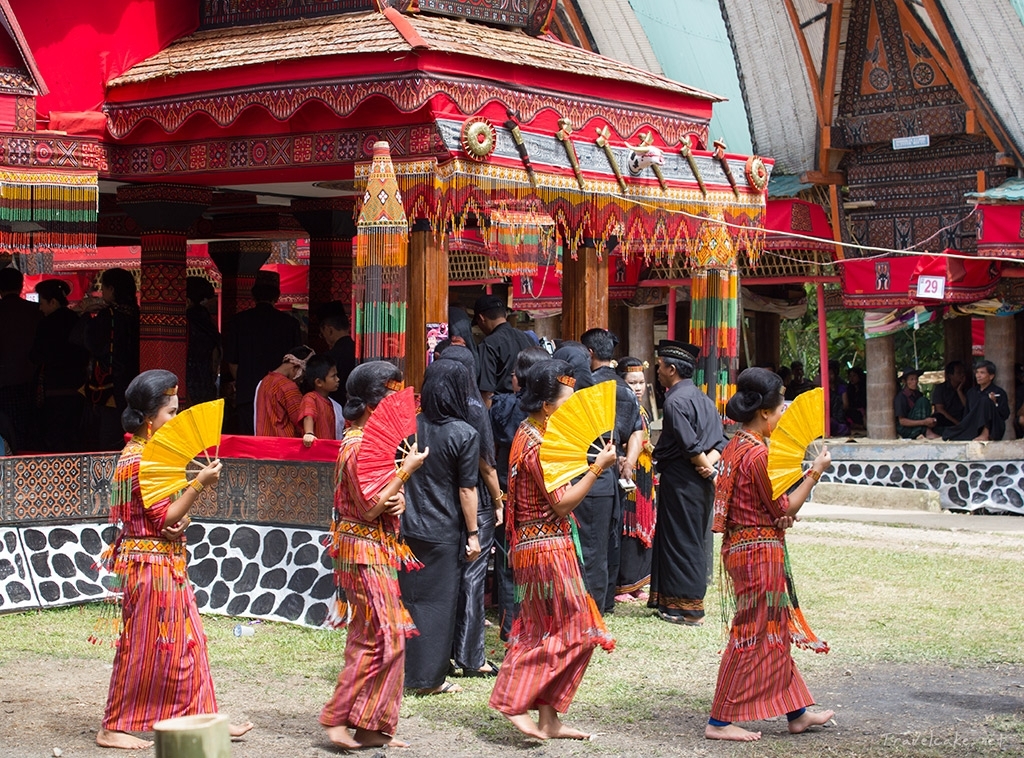
Leave a Reply